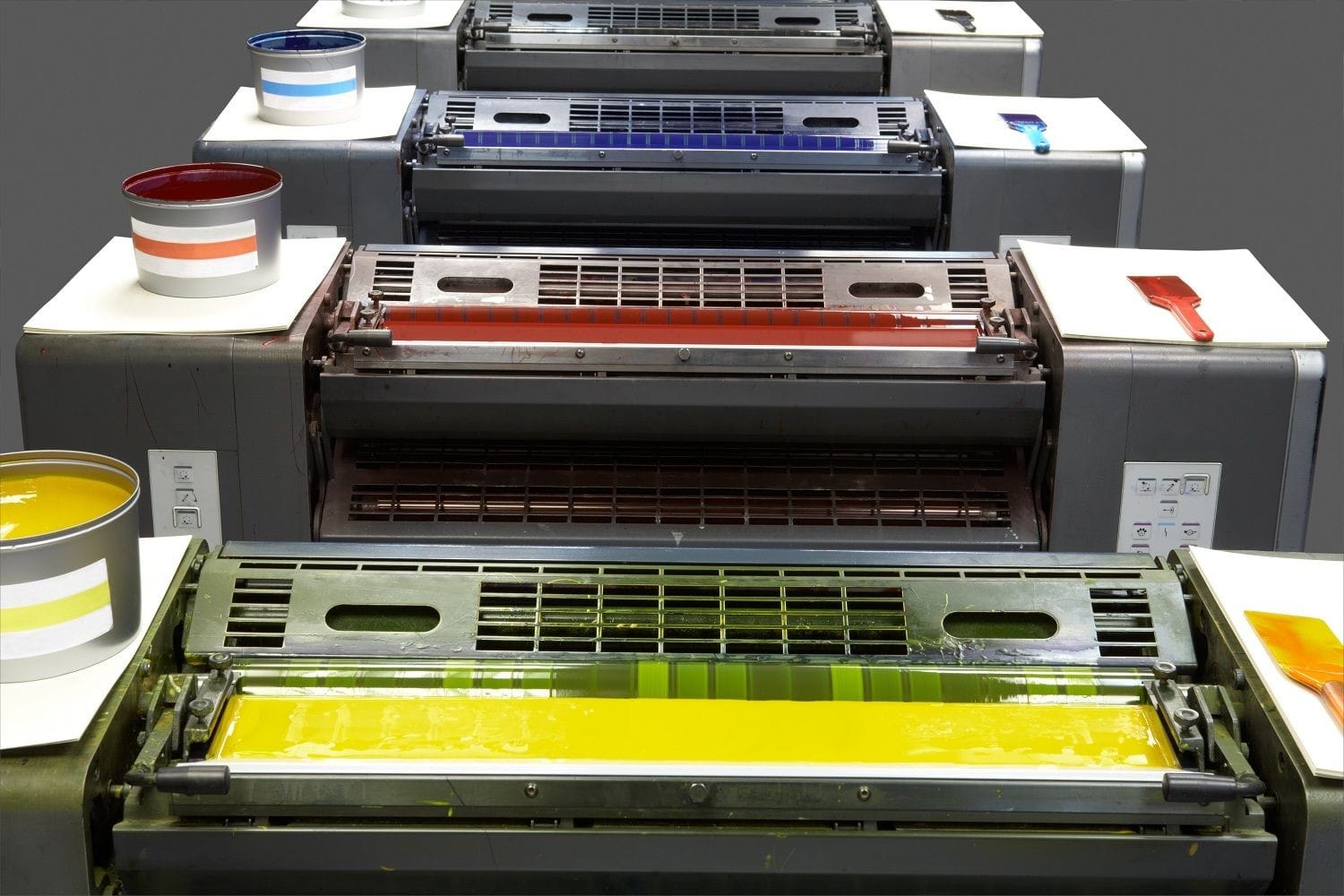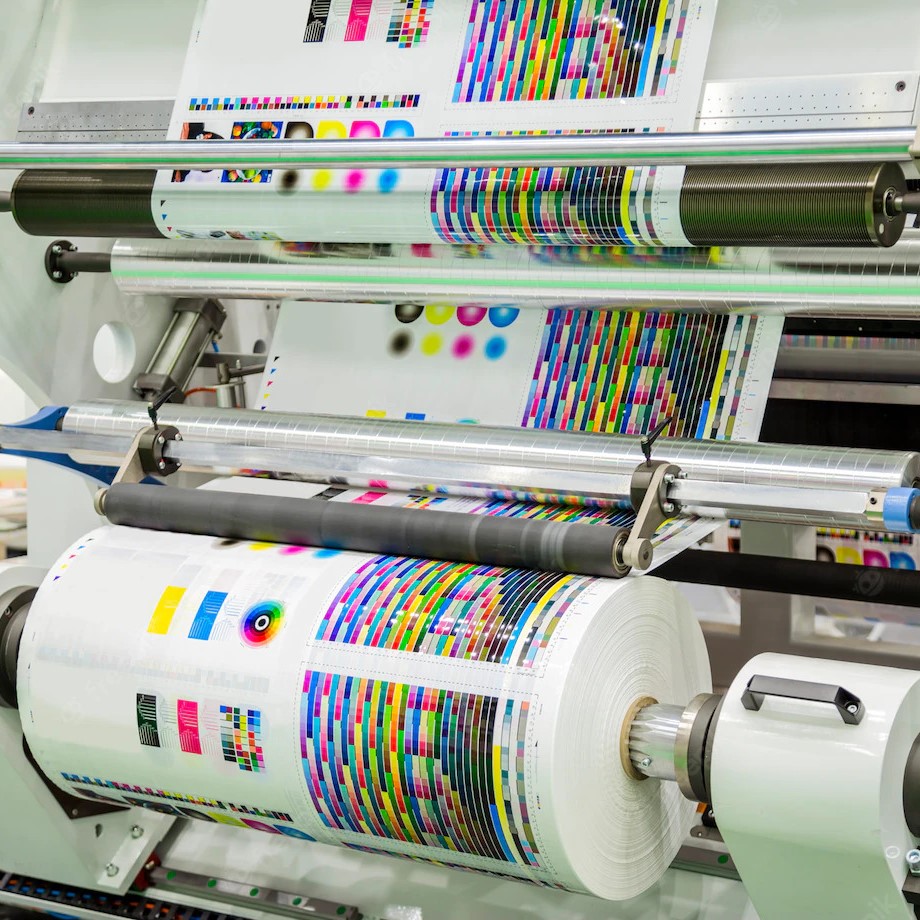Ways litho printing Can Streamline Corporate Communications
Wiki Article
The Essential Overview to Comprehending Litho Printing and Its Applications
Litho printing stands as a significant technique in the printing sector, rooted in the concepts of oil and water repulsion. This strategy not only provides top quality pictures however likewise deals with different industrial requirements. Its applications vary from advertising materials to product packaging, showcasing its versatility. As the industry adapts to new modern technologies, the evolution of litho printing increases questions about its future and importance in a digital landscape. What exists ahead for this sustaining technique?
What Is Litho Printing?
Litho printing, an extensively used printing technique, counts on the concept of oil and water repulsion. This approach uses a flat printing surface area, commonly a steel plate, which is treated to ensure that the photo areas are receptive to oil-based inks while the non-image areas repel them. The procedure begins with the production of a photo on the plate, commonly via illustration or photographic ways. Once the image is prepared, the plate is wetted with water, followed by the application of ink. The ink adheres just to the photo areas, permitting precise reproduction of graphics and message. Litho printing is favored for its capability to create top quality prints with fine detail and lively colors. It is generally used in commercial applications, consisting of papers, publications, and product packaging, showcasing its flexibility and effectiveness in satisfying the needs of modern printing.The Background of Lithography
Although lithography is a modern-day printing staple, its origins trace back to the late 18th century when German dramatist Alois Senefelder developed the technique in 1796. Originally created as a method for recreating texts and images, lithography used a level stone surface to develop prints with a chemical procedure. Senefelder's development permitted for greater adaptability and imaginative expression compared to previous printing methods.By the 19th century, lithography got prevalent approval, ending up being a preferred choice among artists and publishers. It enabled the automation of illustrations, maps, and posters, notably influencing the printing sector. The strategy additionally progressed with the introduction of lithographic presses, improving effectiveness and quality.As the commercial change progressed, lithography adapted to satisfy the demands of industrial printing, leading the method for modern applications. Today, it continues to be a necessary technique in different markets, consisting of posting, packaging, and art recreation.Exactly How Litho Printing Works
A key feature of litho printing is its reliance on the concept of oil and water repulsion - litho printing. In this process, photos are moved from a flat surface area, generally a metal or polymer plate, to paper. Home plate is treated so that the locations intended for printing draw in ink, while the non-image areas repel it because of their fondness for water. The printing begins by wetting the plate with water, which follows the non-image areas. Subsequently, an oil-based ink is used, sticking just to the desired picture areas.When the plate enters into contact with the substratum, the ink is moved, developing a print. The litho printing process is qualified of producing premium images with fine information. It is usually used for automation as a result of its efficiency and consistency, making it a favored approach for commercial printing applicationsAdvantages of Litho Printing
One remarkable advantage of litho printing is its capacity to create high-quality photos consistently, making it a suitable option for business projects. This printing method makes use of a level printing plate, guaranteeing also ink distribution and sharp details. Litho printing is likewise renowned for its shade accuracy, making it possible for vibrant and true-to-life recreations, which is necessary for branding materials.Moreover, it sustains a vast selection of substratums, including paper, cardboard, and also particular plastics, improving its adaptability. The procedure is cost-efficient for huge runs, as economic situations of range reduce per-unit expenses. On top of that, litho printing has a quick turnaround time, permitting for effective manufacturing schedules.Its toughness likewise means that printed materials resist fading, making certain that the last product keeps its visual charm with time. On the whole, these advantages make litho publishing a favored choice across different industries, adding to its enduring popularity.
Applications of Litho Printing in Organization
As organizations progressively seek trustworthy and top notch printing remedies, litho printing becomes a key gamer in various applications. This strategy is particularly favored for producing advertising products such as sales brochures, leaflets, and catalogs, thanks to its capacity to deliver vibrant colors and sharp photos. Furthermore, litho printing is regularly employed for packaging remedies, allowing business to create distinctive tags and boxes that enhance product appeal.In the sector of business identification, litho printing contributes in generating expert stationery, organization cards, and marketing merchandise, which help strengthen brand name recognition. It is extensively utilized in the publishing industry for published products such as books and publications, where regular high quality is critical. Overall, litho printing's versatility and performance make it a crucial tool for services aiming to connect efficiently and develop a strong market presence.Artistic Use Litho Printing
Litho printing serves as a flexible medium in the domain name of printmaking, offering musicians a special technique to reveal their creativity. This method permits for a vast array of artistic applications, from traditional prints to contemporary interpretations. By discovering the subtleties of browse around here litho printing, musicians can harness its distinct qualities to enhance their job.
Printmaking Techniques Summary
The virtuosity of printmaking includes a diverse variety of techniques, with litho printing sticking out for its unique technique to image development. This approach relies on the principle of oil and water repulsion, permitting musicians to draw straight onto a sedimentary rock or metal plate with a greasy medium. As soon as prepared, home plate is moistened and inked, moving the photo onto paper through pressure. Litho printing is commemorated for its capacity to produce fine details and abundant tonal variants, making it a popular choice among artists. Furthermore, the procedure is functional, accommodating both standard strategies and modern-day adaptations. This versatility enables litho printing to bridge different imaginative designs, enriching the printmaking landscape with its distinctive attributes and capacities.Unique Artistic Applications
Exploring the distinct creative applications of litho printing discloses its remarkable flexibility in different imaginative areas. Artists utilize litho printing to create complex styles and appearances, enabling expressive and comprehensive works. The process assists in the reproduction of brilliant colors, making it suitable for images and art prints. Several modern artists embrace lithography for its ability to combine traditional techniques with modern principles, causing cutting-edge art work. In addition, litho printing is usually used in the manufacturing of restricted edition prints, enhancing their value and allure. The tactile quality of litho prints adds a distinctive measurement, bring in enthusiasts and art fanatics alike. On the whole, litho printing continues to be a substantial medium for artistic expression, linking timeless techniques with modern creative thinking.The Future of Litho Printing in a Digital Globe
As the printing market develops, litho printing faces the difficulty of integrating digital technologies to continue to be pertinent. Methods concentrated on electronic combination, alongside patterns in sustainability and innovation, will certainly form its future - litho printing. Understanding these characteristics is vital for industry stakeholders aiming to adapt to a swiftly altering landscapeDigital Integration Approaches
A growing variety of litho printing companies are welcoming digital assimilation strategies to remain affordable in a progressively electronic landscape. By incorporating electronic workflows, these business can streamline processes and boost efficiency. This combination enables real-time data management and boosted interaction in between divisions, decreasing turnaround times considerably. In addition, digital devices enable far better customization and customization of published materials, dealing with details customer demands. Business are likewise taking on crossbreed printing solutions that combine standard litho methods with electronic modern technologies, offering flexibility in production. Leveraging data analytics helps in understanding market trends and customer preferences, allowing businesses to make informed decisions. Overall, digital assimilation is coming to be essential for litho printing companies intending to introduce and reply to advancing market demands.Sustainability and Technology Patterns

Often Asked Inquiries
What Materials Are Generally Used in Litho Printing?
The products commonly utilized in litho printing consist of aluminum plates, ink, water, and paper. Each part plays an important duty in the printing process, making sure high-quality picture recreation and effective transfer of ink onto the substrate.Just How Does Litho Printing Contrast to Digital Printing?
Litho printing provides remarkable shade uniformity and quality for big runs, while electronic printing masters short runs and personalization. Each try this approach has distinct advantages, dealing with different demands based upon production scale and cost-efficiency.What Is the Common Turn-around Time for Litho Printing Projects?
The regular turn-around time for litho printing projects varies, normally varying from a couple of days to numerous weeks. Factors influencing this timeframe include task intricacy, amount, and called for finishing processes, affecting general production routines.Can Litho Printing Accommodate Personalized Sizes and Formats?
Litho printing can without a doubt suit personalized sizes and formats, allowing for flexibility in design. This adaptability enables customers to attain one-of-a-kind print end results customized to their details demands, improving the general efficiency of their jobs.What Are the Ecological Influences of Litho Printing?
The ecological influences of litho printing consist of source usage, chemical use, and waste generation. Innovations in sustainable practices and environment-friendly materials are gradually minimizing these unfavorable impacts, promoting a much more environmentally liable strategy to printing.Report this wiki page